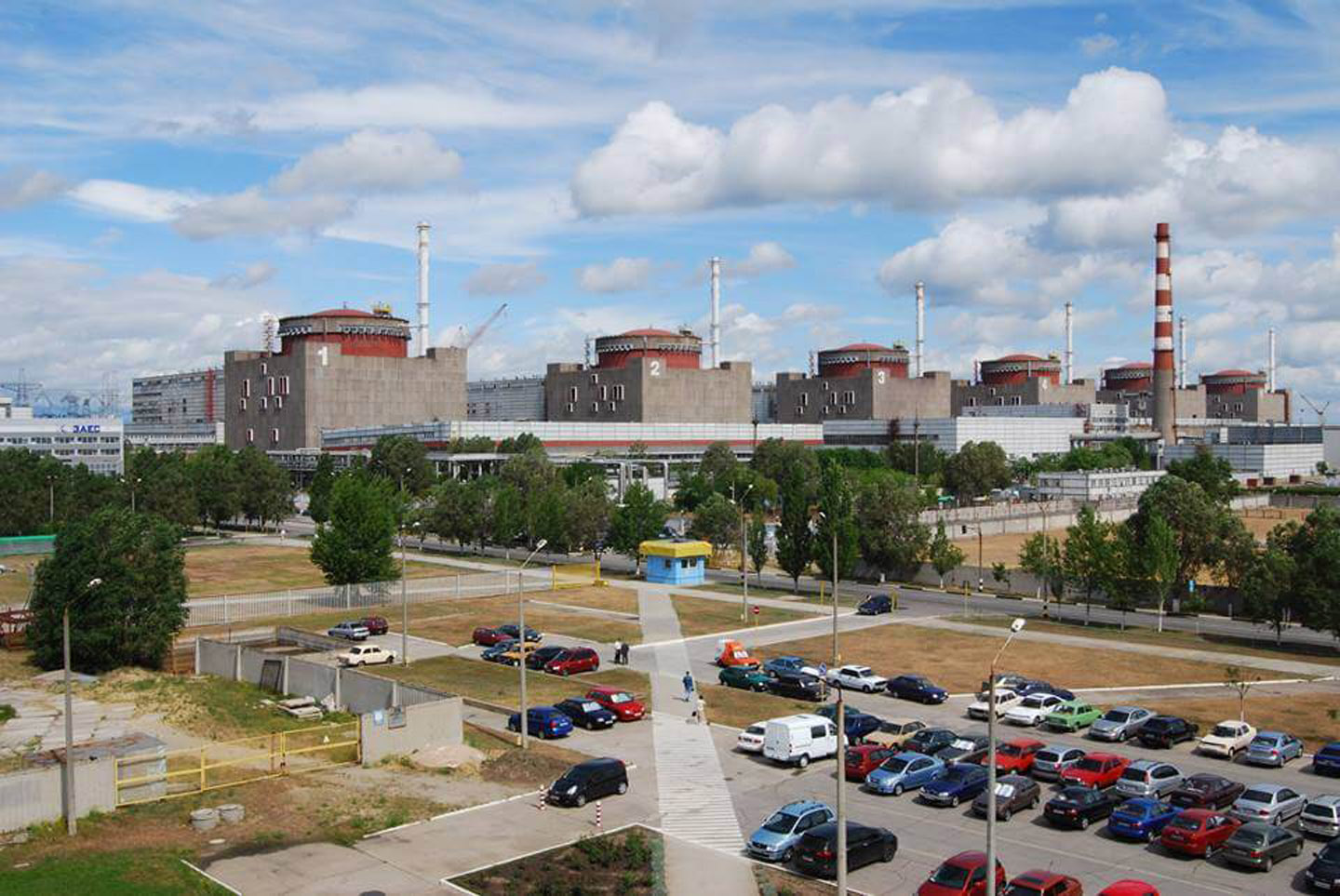Energoatom’s Zaporizhzhia plant, in southeastern Ukraine. (Photo: Energoatom)
Latest on Zaporizhzhia: As of this morning, Russian military forces have taken control of the Zaporizhzhia nuclear power plant in Ukraine. The Russian military began shelling the Zaporizhzhia nuclear plant in southeastern Ukraine, resulting in a fire at the site on Thursday.
February 24, 2022, 9:48AMUpdated February 24, 2022, 3:10PMNuclear News A map of Ukraine and the nuclear sites around the country.
Russian forces invaded Ukraine today in what news sources are calling the largest military attack of one state against another on the European continent since World War II. These developing events follow an extraordinary meeting of the NATO-Ukraine Commission in Brussels on February 22, when NATO secretary general Jens Stoltenberg said that Russia’s recent actions constituted “serious escalation” of tensions in the region and that Russia had shifted from covert attempts to destabilize Ukraine to overt military action. Well before this juncture was reached, news outlets had questioned the readiness of Ukraine’s nuclear power fleet to operate safely in a country at war and ensure energy security, while Energoatom, which operates all of Ukraine’s nuclear power reactors, has issued assurances of safety and security.
July 2, 2021, 2:15PMUpdated December 30, 2021, 7:15AMNuclear NewsSusan Gallier A hot cell at Argonne National Laboratory was used to demonstrate a process for purifying molybdenum-99, an important diagnostic medical isotope. (Photo: Wes Agresta/ANL)
The biggest impact of radiation in our lives may come not from radiation itself, but from regulations and guidelines intended to control exposures to man-made sources that represent a small fraction of the natural radiation around us.
Decades of research have been unable to discern clear health impacts from low levels of ionizing radiation, leading to calls for a new research program—one with a strategic research agenda focused on how the scientific understanding of the health effects of low doses (below 100 millisievert) and low dose rates (less than 5 mSv per hour) can best be augmented, applied, and communicated.
The electric power transmission grid of the U.S. consists of thousands of miles of lines operated by hundreds of companies.
To do big things, like building the interstate highway system, or going to the moon, government usually has a plan. Electric companies and grid operators, which are responsible for keeping the lights on, always have a plan. But something unusual has happened in the past few months. About four dozen U.S. utilities, plus the federal government and many states, have promised to do something extremely big: to eliminate carbon dioxide emissions, or cut them drastically. But they are not clear on how.
November 24, 2021, 2:30PMNuclear Newsthe U.S. Army Corps of Engineers, Baltimore District, Deactivated Nuclear Power Plant Program staff The Sturgis is towed from the Galveston, Texas, pier to the shipping channel on September 25, 2018, as it heads toward Brownsville, Texas, for final shipbreaking and recycling. Over the past three years in Galveston, the U.S. Army Corps of Engineers has been implementing the challenging and complex effort to decommission the MH-1A—the deactivated nuclear reactor that was onboard the Sturgis vessel.
The U.S. Army Corps of Engineers (USACE), Baltimore District, is home to the North Atlantic Division’s Radiological Health Physics Regional (RHPR) Center of Expertise, which is leading the decommissioning of Army reactors.
From 1956 to 1976, the Army’s nuclear power program operated several small nuclear reactors to confirm the feasibility of their meeting military power needs on land. Three Army reactors were deactivated in the 1970s and placed into safe storage awaiting future decommissioning.
Statement from American Nuclear Society President Steven Nesbit and Executive Director/CEO Craig Piercy
A whale swims off the coast by Diablo Canyon nuclear power plant. (Image: PG&E)
The American Nuclear Society supports the continued operation of California's Diablo Canyon nuclear power plant. The premature shutdown of Diablo Canyon units 1 and 2, slated respectively in November 2024 and August 2025, will inflict grave harm to California's economy and environment.















 In September, cable television’s Science Channel aired an episode on power plant catastrophes as part of its series Deadly Engineering, with one principal segment on the 1979 Three Mile Island accident. The episode contains several inaccuracies and distortions—perhaps the biggest mistake being that the TMI accident was featured in Deadly Engineering at all, since no deaths or long-term adverse health trends resulted from the accident.
In September, cable television’s Science Channel aired an episode on power plant catastrophes as part of its series Deadly Engineering, with one principal segment on the 1979 Three Mile Island accident. The episode contains several inaccuracies and distortions—perhaps the biggest mistake being that the TMI accident was featured in Deadly Engineering at all, since no deaths or long-term adverse health trends resulted from the accident.
